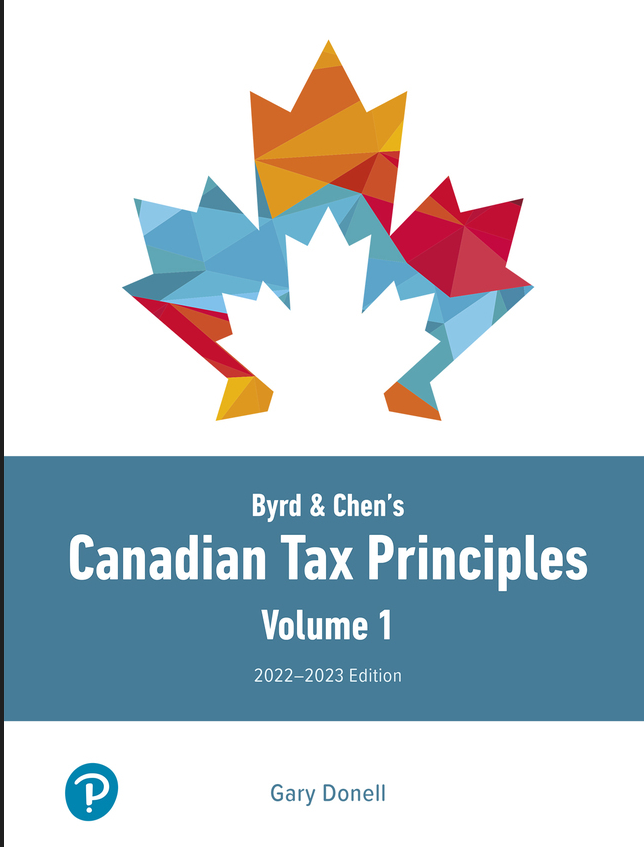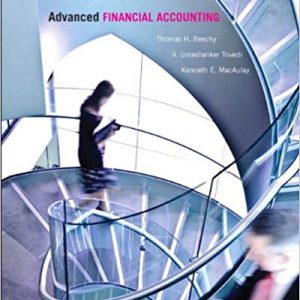No products in the cart.
ACCOUNTING
 Loading...
Loading...
Byrd & Chen’s Canadian Tax Principles, 2022-2023, Volume 1, 1st edition Gary Donell Byrd Chen Clarence Byrd solution manual
Byrd & Chen’s Canadian Tax Principles, 2022-2023, Volume 1, 1st edition Gary Donell Byrd Chen Clarence Byrd solution manual
Byrd & Chen’s Canadian Tax Principles
( solution manual)
Byrd & Chen’s Canadian Tax Principles, 2022-2023, Volume 1, 1st edition Gary Donell Byrd Chen Clarence Byrd solution manual
Edition: 2022-2023, Volume 1, 1st edition
Author Name: Gary Donell Byrd Chen Clarence Byrd
contact:
Whatsapp +1 (949) 734-4773
for the Facebook page click here
for more books for ( Test Bank and Solution Manual) click here
sample free
Instructor’s Solutions Manual
Chapter 1 – Solutions to Assignment Problems
 Loading...
Loading...
$44.00 $100.00
Byrd & Chen’s Canadian Tax Principles, 2022-2023, Volume 1, 1st edition Gary Donell Byrd Chen Clarence Byrd solution manual
Byrd & Chen’s Canadian Tax Principles
( solution manual)
Byrd & Chen’s Canadian Tax Principles, 2022-2023, Volume 1, 1st edition Gary Donell Byrd Chen Clarence Byrd solution manual
Edition: 2022-2023, Volume 1, 1st edition
Author Name: Gary Donell Byrd Chen Clarence Byrd
contact:
Whatsapp +1 (949) 734-4773
for the Facebook page click here
for more books for ( Test Bank and Solution Manual) click here
sample free
Instructor’s Solutions Manual
Chapter 1 – Solutions to Assignment Problems
Solution to AP 1-1
There is, of course, no one solution to this problem. Further, student answers will be limited as, at this point, their understanding of tax concepts and procedures is fairly limited. However, the problem should provide the basis of an interesting discussion. What we have provided here are some suggested comments related to the various qualitative characteristics.
Equity or Fairness The increase provides both horizontal and vertical equity. Individuals with the same income will receive the same treatment, while individuals with different income will be treated differently.
Neutrality The increase is not neutral. It targets high-income individuals and is likely to influence their economic decisions.
Adequacy While the increase was intended to create additional revenues, there is some evidence that the opposite has happened. This reflects the fact that individuals with high levels of income are sometimes in a position to move some, or all, of that income out of Canada (e.g., move their residence to the U.S.) and to engage in complex income splitting transactions.
Flexibility With respect to flexibility, the rate can be changed at any time. However, as a practical matter, such changes would need to be on an annual basis.
Simplicity and Ease of Compliance This change would not appear to present any compliance issues.
Certainty The increase makes it clear to individual taxpayers the amount of taxes that they will be required to pay.
Balance between Sectors Unfortunately, this change will increase the imbalance in the Canadian tax system between corporate and individual taxpayers. Before the change, individuals were already paying a disproportionate share of tax revenues. The intent of this change was to further increase this imbalance.
International Competitiveness This increase further widens the gap between Canadian and U.S. income tax rates, making Canada far less competitive with the U.S. However, Canadian income tax rates are not out of line with income tax rates in other industrialized countries.
Solution to AP 1-2
Instructor Note There is no definitive solution to this problem. What follows represents possible comments that could be made.
For the Canadian tax system to be more competitive with the U.S., both individual and corporate income tax rates would have to be lowered. The most obvious conflict that would arise would be with ADEQUACY of revenues. Tax rate reductions reduce revenues and would create additional problems with the large budget deficits that exist in Canada.
Another issue is BALANCE BETWEEN SECTORS. The Canadian system is heavily dependent on individual income tax as opposed to corporate income tax. Lowering corporate rates would further exacerbate this problem.
The question of NEUTRALITY could also be involved. Trying to match either U.S. individual or U.S. corporate income tax rates could have an impact on economic decisions.
Any change in income tax rates has an impact on CERTAINTY.
Depending on whether changes are made to corporate rates or, alternatively, individual rates, this could have an impact on FAIRNESS or EQUITY.
Trying to match rates in the U.S. reduces the FLEXIBILITY of the Canadian tax system.
Solution to AP 1-3
Diamonds, South Africa In a monopoly, the tax will likely be shifted to employees and/or consumers. The incidence shift will depend on competition in world markets and employment levels. If the international







There are no reviews yet.